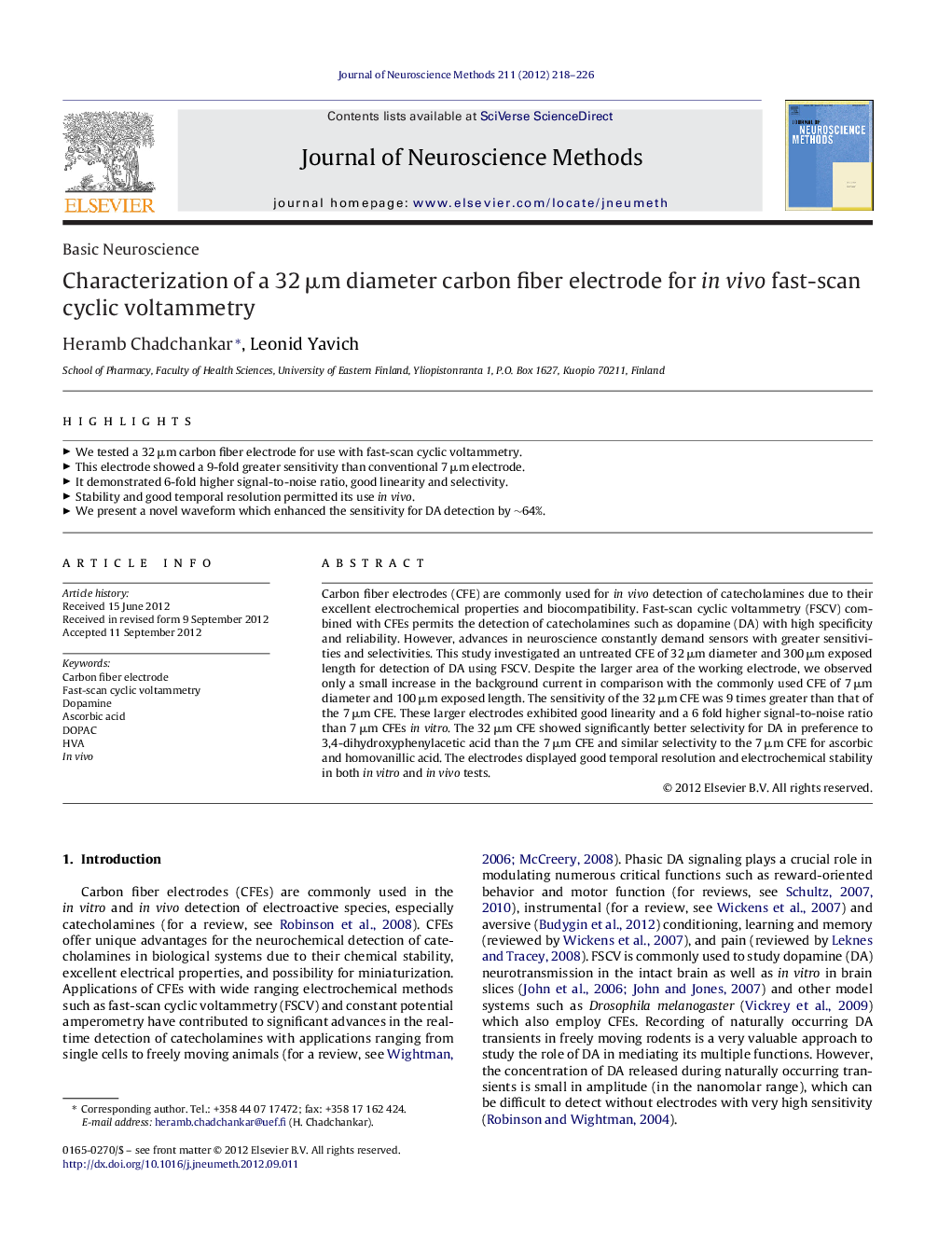| کد مقاله | کد نشریه | سال انتشار | مقاله انگلیسی | نسخه تمام متن |
|---|---|---|---|---|
| 6269537 | 1295144 | 2012 | 9 صفحه PDF | دانلود رایگان |

Carbon fiber electrodes (CFE) are commonly used for in vivo detection of catecholamines due to their excellent electrochemical properties and biocompatibility. Fast-scan cyclic voltammetry (FSCV) combined with CFEs permits the detection of catecholamines such as dopamine (DA) with high specificity and reliability. However, advances in neuroscience constantly demand sensors with greater sensitivities and selectivities. This study investigated an untreated CFE of 32 μm diameter and 300 μm exposed length for detection of DA using FSCV. Despite the larger area of the working electrode, we observed only a small increase in the background current in comparison with the commonly used CFE of 7 μm diameter and 100 μm exposed length. The sensitivity of the 32 μm CFE was 9 times greater than that of the 7 μm CFE. These larger electrodes exhibited good linearity and a 6 fold higher signal-to-noise ratio than 7 μm CFEs in vitro. The 32 μm CFE showed significantly better selectivity for DA in preference to 3,4-dihydroxyphenylacetic acid than the 7 μm CFE and similar selectivity to the 7 μm CFE for ascorbic and homovanillic acid. The electrodes displayed good temporal resolution and electrochemical stability in both in vitro and in vivo tests.
⺠We tested a 32 μm carbon fiber electrode for use with fast-scan cyclic voltammetry. ⺠This electrode showed a 9-fold greater sensitivity than conventional 7 μm electrode. ⺠It demonstrated 6-fold higher signal-to-noise ratio, good linearity and selectivity. ⺠Stability and good temporal resolution permitted its use in vivo. ⺠We present a novel waveform which enhanced the sensitivity for DA detection by â¼64%.
Journal: Journal of Neuroscience Methods - Volume 211, Issue 2, 15 November 2012, Pages 218-226